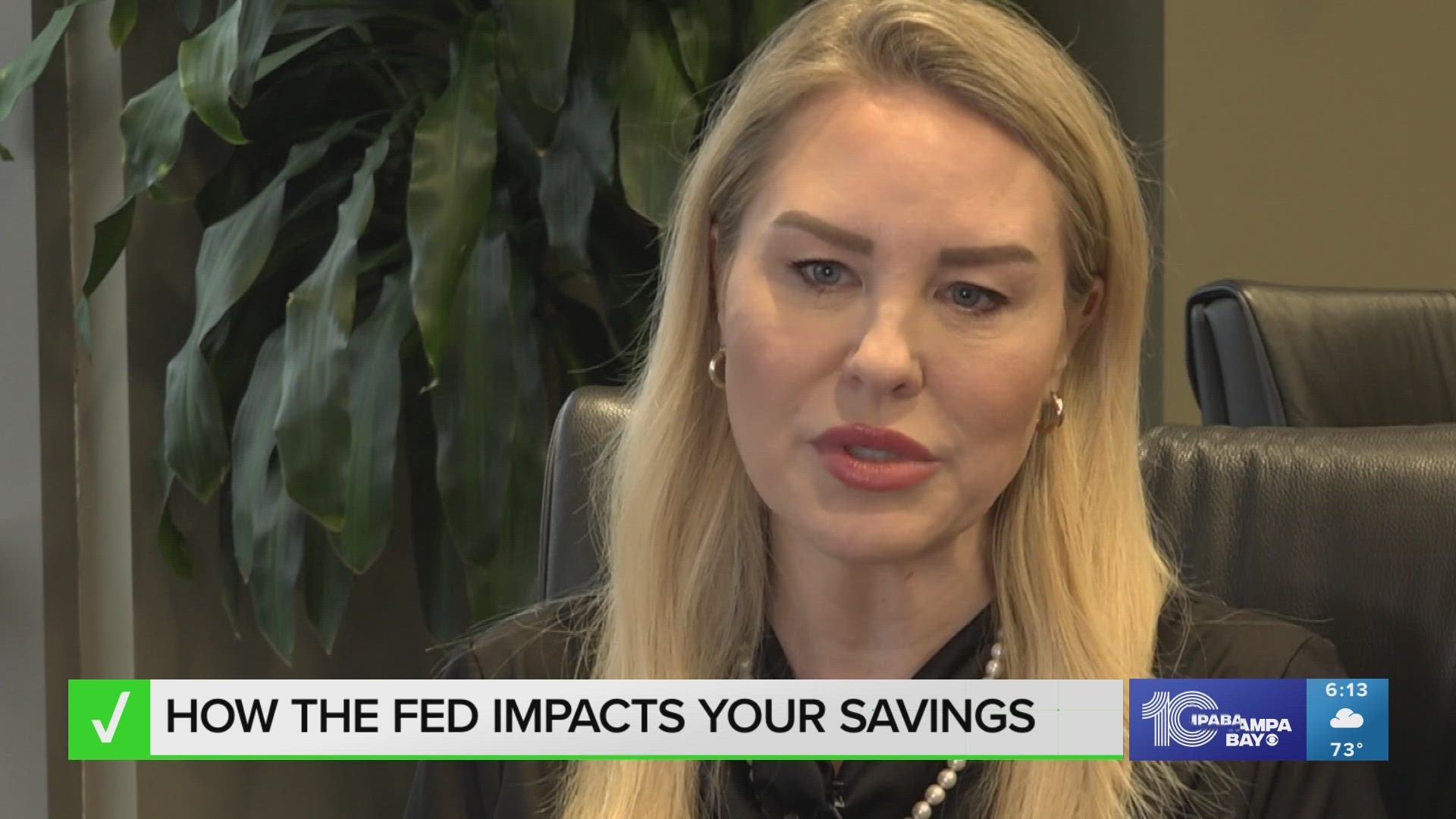ST. PETERSBURG, Fla. — Just as important as saving your money is where you’re saving it.
As the Federal Reserve has hiked the nation’s benchmark rate to increase borrowing costs, rates on high-yield savings accounts have followed, offering big returns for savers.
Some of the top high-yield savings accounts are offering more than 5 percent annual percentage yield (APY).
But the Fed has signaled it could start cutting the nation’s benchmark rate and VERIFY viewers asked how that will impact rates on high-yield accounts.
THE QUESTION
Will changes to the nation’s benchmark interest rate impact returns on high-yield savings accounts?
THE SOURCES
- Bankrate
- Danyell Munassi, Raymond James Financial
THE ANSWER
Yes, changes to interest rates will impact returns on high-yield savings accounts.
WHAT WE FOUND
When the Federal Reserve adjusts interest rates it directly impacts your wallet, but it’s not always for the worst.
Bad news for borrowers has been a boon for savers as the Fed has hiked rates nearly a dozen times since the pandemic.
Savings account rates are loosely linked to rates set by the Fed, according to Bankrate. When the Fed raises its rate, financial institutions tend to follow by paying more interest on high-yield savings accounts.
Online banks like Barclays or American Express tend to offer higher rates for savers given fewer overhead costs compared to traditional brick-and-mortar banks like Chase, according to Bankrate.
As rates have steadily climbed since the pandemic, rates on high-yield savings accounts have followed with some now paying more than 5 percent APY.
“High yield savings returns are the highest that they've been in a very long time,” said Danyell Munassi, associate vice president of wealth management at Raymond James Financial. “Accounts right now are paying about between 4.5 and 5.5 percent whereas your average checking account is paying 0.07 percent.”
Put it this way, having even $1,000 in a high-yield savings account could earn you more than $50 in interest after one year. Interest earned on that same amount of money in a traditional savings account after one year would be less than $5.
But most economists expect the Fed to start reducing its benchmark rate this year, which is now at about 5.4 percent. Munassi says that will slowly impact returns for high-yield savers.
“That yield that you're getting is going to be a variable yield,” Munassi said. “Meaning when interest rates go up, the yield will go up and when interest rates come down, the yield on that high yield savings account will come down as well.”
Munassi said savers still looking for higher returns with lower risk have options including U.S. Treasury bonds, certificates of deposit (CDs) or municipal bonds. These options earn a fixed rate of return, according to Bankrate, but in exchange for a guaranteed yield you are locking up your money until the term expires.
“These are all really good things to look at putting your money into, where you can lock in today's higher yields for a longer duration of time,” she said.
But with these other options, you must be able to park your money for a set period or you risk being penalized for trying to cash in early, Munassi adds.

